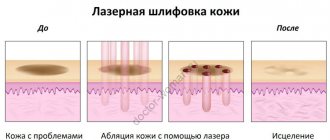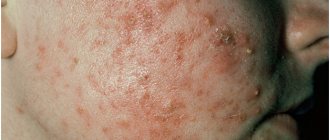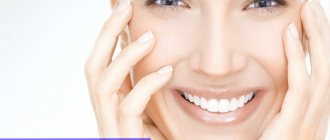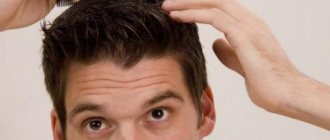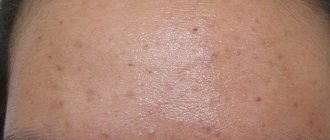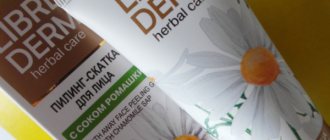“A couple of years ago, hormonal acne appeared, which left scars. Now I can't get rid of them. First I tried darsonval and bodyaga - dead poultices, then TCA and laser resurfacing - it didn’t help. Well, what should I do?! Has anyone even managed to remove acne scars?!”
Evgeniya, 31 years old
“Tell me something that really helps with spots and scars that remain after acne... How to treat the skin? Otherwise it will soon come to suicide...”
Alla, 21 years old
"Help! This is already a cry from the soul! I am looking for an effective remedy for acne scars on my face. I have probably tried everything possible to get rid of this ugliness. But nothing helps. I hate myself and my reflection in the mirror!”
Ekaterina, 27 years old
Every day, women and men come to us at Platinental with the only request - to cure acne scars. They come after many years of unsuccessful laser resurfacing and collagen injections, having spent a lot of money and effort, but without visible improvements.
The problem is not invented. After all, if acne goes away sooner or later, deep scars remain for life. Without makeup, retouching and filters, even celebrities would look like this:
Cameron Diaz
Brad Pitt
Britney Spears
Mickey Rourke
If you want to eliminate the causes of the problem once and for all and get perfectly smooth skin, turn your attention to Maxim Vasiliev’s original method. In just one visit, it allows you to cure acne scars on the face, back and other parts of the body, including very deep and old ones.
The skin is evened out, becomes smooth, beautiful and remains that way for the rest of its life.
The technique is based on the subcision method, which we have improved. As a result of its use, scars are not just slightly smoothed out. Scar craters, deformations and irregularities disappear and are leveled with the surface of the skin, stagnant red spots disappear.
This method makes the dream of beautiful and smooth skin without hated scars come true and restores self-confidence.
Maxim Vasiliev’s original technique helps remove acne scars completely and forever. The skin becomes smooth immediately after the procedure, and only a bruise remains from the scar. In 2 weeks the skin will completely recover, but the scars will never return again.
No other method gives such a result.
How does removing acne scars using Platinetal differ from other methods?
We devoted a separate article to what acne scars are, and why resurfacing will never solve the problem of post-acne, no matter how many times you do it.
In short, scars form in the lower, reticular layer of the skin. It is in this layer that elastin and collagen fibers are located and it determines how smooth our skin looks. Acne damages its structure. A scar forms at the site of damage.
Since scars form in the reticular layer of the skin, it is logical that this is what needs to be affected in order to smooth out the scar. This is the mistake: in the process of peeling, polishing and other procedures to eliminate scars, cosmetologists act only on the upper, papillary layer of the skin. But the problem was and remains the same, because, by and large, the doctor does not work with it at all.
We work with the lower, papillary layer of skin, where scars form, and eliminate them.
Keloid scar. Causes
A keloid scar is a pathological growth of connective tissue of the skin that occurs after injury, burn, or inflammatory process of the skin.
The proliferation of rough connective tissue and itching of the keloid scar are the main symptoms of the disease. Uncontrolled growth of scar tissue occurs 2-4 months after injury, but can occur a year or more after the wound has healed. Resorption of keloid scars is not spontaneous. To date, the causes of keloids have not been precisely established. It is known that scar formation can occur not only at the site of extensive damage, but also locally, for example, after removal of a mole. Such scars are the result of a disruption in the process of normal skin regeneration.
Typically, a keloid appears in the following cases:
- Hormonal imbalance (thyroid dysfunction, carbohydrate metabolism disorders, etc.).
- Hereditary predisposition.
- Taking certain medications.
- Thermal and chemical burns.
- Surgical interventions.
- Inflammatory processes of the skin.
Keloid scars tend to spread to healthy tissue. The skin covering the keloid is atrophically thinned. It does not contain sweat and sebaceous glands, hair follicles and pigment cells.
Subcision is the most effective remedy for acne scars on the face
The method is based on the subcision technique, which was developed by American dermatologist David S. Orentreich.
Treatment of acne scars in women and men involves cutting the connecting cords that fix the bottom of the scar and immerse it into the skin. The surgeon cuts the tissues, they are released and rise up, the skin is leveled.
This is a very delicate and painstaking work that requires the doctor to have knowledge, precision, concentration, patience and pedantry. Subcision is the only technique that affects the cause of skin unevenness and eliminates it. Other methods deal only with the investigation.
What are the results of treating scars with injections?
Doctors at the Medical Center for Health Care will help you get rid of scars that cause discomfort or look unsightly. The practice of using injection techniques in our clinic has shown excellent results. After the course:
- the size of the scar is normalized;
- the skin brightens, and the color of the damaged area approaches natural;
- the unpleasant sensations go away.
To help patients, doctors use the best practices that have been collected over 10 years of operation of the center. To achieve positive results, we use proven drugs, select courses taking into account the individual reaction of the body, and combine different approaches.
Benefits of treating scars with injections:
- a low-traumatic method that does not require hospital treatment or lifestyle restrictions;
- the result is noticeable from the first therapy sessions;
- combined with cryotherapy, laser and other methods;
- a small list of contraindications and age restrictions.
Removal of acne scars using the subcision method takes place in 4 stages
Acne scar removal is performed under local anesthesia, so you will not experience pain.
Stage 1. Tissue separation
Treatment of post-acne scars begins with the actual subcision. All manipulations are carried out with a thin needle from a syringe, so the skin is minimally injured.
This stage lasts about 3 hours and is carried out under the control of a surgical microscope - this ensures maximum accuracy and eliminates damage to neighboring tissues.
Stage 2. Filling voids
Immediately after tissue separation, the crater rises upward. A void forms underneath. So that after a while the tissues do not fall back to their original place, this void must be filled. We use collagen or stabilized hyaluronic acid as filler.
After 6 months, the drug is replaced by collagen and elastin - this achieves a life-long skin smoothing effect.
Expert comment:
“After severe acne, one small area of skin may have more than 5 scars. When there are a lot of deep scars and pits, it is technically impossible to even out the relief in one procedure. If the distance between them is less than 1 mm, it is impossible to cut them all in one procedure - the scars will lose their support point and will settle at once. The result will be the opposite effect - one large crater.
Therefore, removal of scar skin in this case must be repeated after 2 weeks. How many procedures will be needed to eliminate all scars and get the most even skin texture depends on their number.”
Maxim Vasiliev, plastic surgeon, expert in scar removal.
Stage 3. Biorevitalization for acne scars and stagnant spots
The best remedy in this case is a course of biorevitalization using 3% hyaluronic acid. The procedure well evens out the skin tone and returns it to a fresh, healthy appearance.
At this point, acne scar treatment can be completed.
Stage 4. Laser resurfacing
To even out the skin surface as much as possible, in some cases, 6–12 months after revitalization, we recommend fractional laser resurfacing. The indication for resurfacing is an excessively pronounced scar after a boil or multiple deep scars.
Review:
“For as long as I can remember, I have been treating acne scars.
As a teenager I suffered from severe acne. Then the acne went away, but terrible spots and ruts remained. The face was simply disfigured. I was ready for any experiments, just to get rid of them - I had nothing to lose.
But the treatment of acne scars was without visible results. The skin became a little smoother, lighter - and nothing more. But I wanted something completely different! I hated myself, cried, masked the scars with several layers of foundation and powder.
When I learned about
Maxim Vasiliev’s , I thought it was just another promise, and nothing more.
But when I came to see the doctor, I immediately realized that in front of me was not just a professional, but a person who is passionate about his work! And the result is no less important for him than for me. And I believed it. Treatment of acne scars in my case required 4 visits, but the result exceeded all my expectations after the first! For the first time in my life, I loved and accepted myself. I now recommend to all sufferers that acne scars be removed only from Dr. Vasiliev.”
Tatiana M.
Kelofibrase cream 50ml - Instructions
Dosage form
Cream, tube 50 g.
Compound
Urea pura, potassium sorbate, sodium heparin, levomenthol, D-camphor, propylene glycol, cetyl and stearyl alcohol, ascorbyl palmitate, coriander, glycerol dioleate, lemon extract, purified tocopherol, disodium edetate, glycerol laurate, soda, peanut butter.
pharmachologic effect
Kelofibraze cream has antithrombotic and anti-inflammatory effects. Stabilizes tissue trophism by improving microcirculation. Regulates skin moisture and adds elasticity. Lightens and reduces the area of the scar. Heals and relieves inflammation. Stimulates blood circulation and tightens the skin.
Indications for use
Kelofibraze cream is widely used for skin diseases with impaired keratinization.
Indicated to prevent the appearance of new scars and correct existing hypertrophied areas of the skin after surgical interventions, at the site of burns and injuries.
Effective against cosmetic postpartum imperfections in women, with stretch marks on the skin as a result of sudden fluctuations in body weight.
Recommended for physiotherapeutic procedures of phonophoresis and electrophoresis. You can do ultrasound therapy.
In addition, the drug is recommended for use for preventive purposes (for example, during pregnancy or sudden weight changes) to prevent the appearance of stretch marks. Thanks to regular application of the product, the hydration and elasticity of the skin increases, which guarantees its protection from tears. However, against already formed stretch marks and other atrophic scars, the effectiveness will not be very high.
Mode of application
Kelofibraze cream is used 2-3 times a day.
The required amount of cream is applied to the affected area of the body. The application site is massaged with light finger movements until the product is completely absorbed.
The course of treatment for fresh scar changes reaches 4–6 weeks.
For old injuries, Kelofibraze is used for up to six months.
Contraindications
- Individual intolerance to the constituent components of the drug.
- Damage and inflammation on the skin.
- Children under 1 year.
Interaction with other drugs
No clinically significant interactions of Kelofibraze cream with other drugs have been identified.
Pregnancy and breastfeeding
There is no data on the risk of using Kelofibrase cream during gestation and lactation.
Side effects
In some cases, redness and itching are possible.
Storage conditions
Store the cream in its original packaging, protected from light and moisture. The optimal storage temperature is up to 25 degrees Celsius, do not freeze.
Photos "before" and "after"
Subcision is the most effective way to treat acne scars. The result “before” and “after” of one procedure. Surgeon: Vasiliev Maxim.
Correction of deep scars. Photos "before" and "after". Completed by: Vasiliev Maxim.
Laser resurfacing of post-acne scars. Performed by dermatocosmetologist Elena Vlasova.
Diagnosis and treatment of keloid scars
Despite the fact that pathological scars are difficult to treat, modern medicine offers several ways to treat this disease: surgical excision, cryotherapy, drug therapy, physical therapy, laser resurfacing, corticosteroid injections.
Surgical excision
- one of the oldest methods of ridding a patient of a rough scar. The essence of the manipulation is to excise the keloid scar within healthy tissue, followed by suturing the wound with a cosmetic suture. A small, inconspicuous scar remains in place of the scar. A set of subsequent treatment measures: film-forming drugs, local injections of hormonal drugs can significantly reduce the risk of relapse.
Cryotherapy
– this is the effect of low temperatures on the keloid scar tissue. Liquid nitrogen is used as a coolant, which freezes the keloid tissue, disrupting its structure. This leads to the death of scar cells. The procedure is virtually painless for the patient and does not require local anesthesia. If the keloid is small, one visit to the clinic is enough. To effectively combat a medium or large scar, 2-3 sessions are required. It is recommended to combine such therapy with injections of hormonal drugs.
What products are used for injections?
Corticosteroids in the treatment of keloid scars
These are first-line medications for the treatment of keloid scars and second-line medications for hypertrophic scars. Injections suppress inflammation, stop the synthesis of collagen and other substances from which tissue is formed. The drug is administered locally, so it does not cause complications such as taking hormones.
Immunomodulators
Interferons and other drugs of this series are a new method of treating scars. Our practice shows that their use is effective when the risk of relapse is high. Injections reduce the likelihood of the problem recurring by almost 40%.
Drugs that have a resolving effect on scar tissue
Hyaluronidase and other medications of this series break down the component necessary for the construction of the scar. As a result, the scar softens and flattens, and the permeability of tissues and blood vessels increases.
Combination drugs
Practical experience has shown the effectiveness of using combination medications. For example, agents that combine hyaluronidase and a normalizer of the immune response, azoximer bromide, have proven themselves to be effective. Also in our practice, doctors use other combinations of drugs.
New agents for the treatment and prevention of hypertrophic scars
Doctors at the International Center for Health Protection monitor scientific research and implement new drugs approved by the medical community into practice. For example, in difficult cases, 5-fluorouracil and bleomycin can be used.

